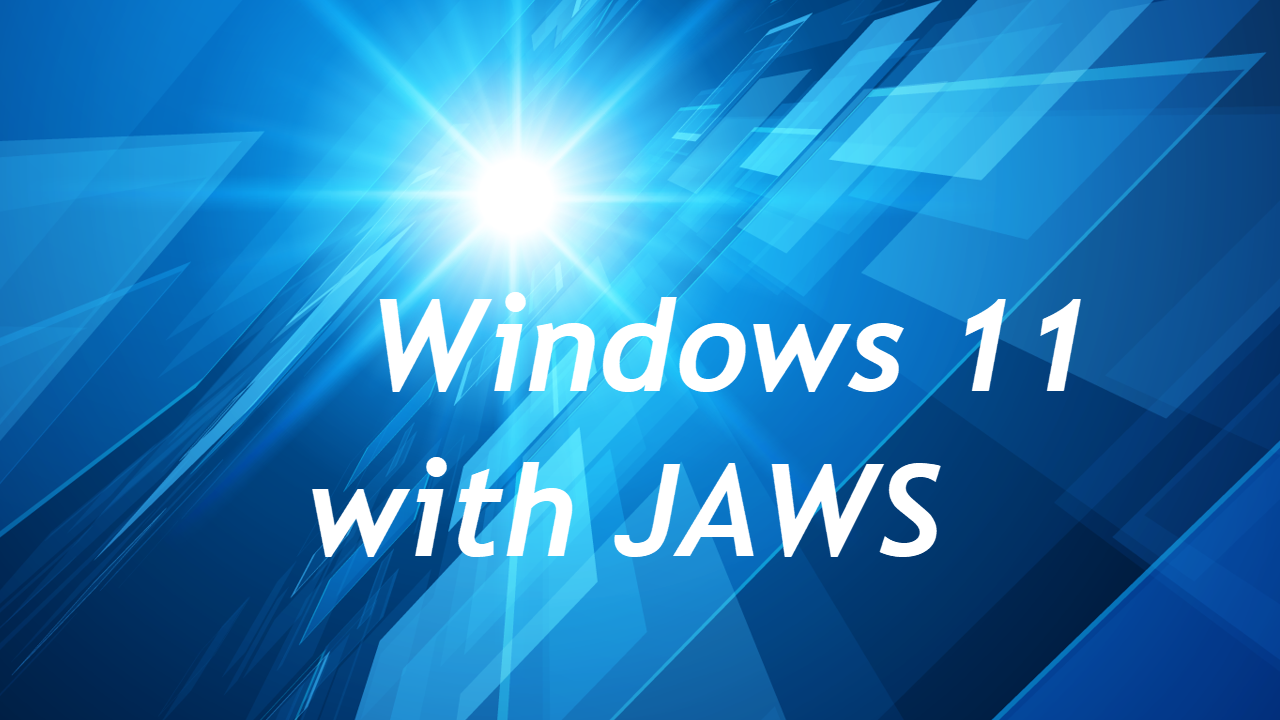Windows 11 with JAWS

Windows 11 Short Training Lessons
Permanently Unhide the “Safely Remove Hardware and Eject Media” Icon in Windows 11
The Taskbar corner in Windows 11 has been condensed to a “Show Hidden Icons” button along with a minimal number of other icons. While this looks great and is less cluttered, some of the icons for apps you may often use could be hidden within the Show Hidden Icons area when you need them. This is true of the “Safely Remove Hardware and Eject Media” icon.
Learn how to find it and fix it in Windows 11 on the following page:
Permanently Unhide the “Safely Remove Hardware and Eject Media” Icon in Windows 11
Windows 11 with JAWS, an Introduction
Welcome to Windows 11 with JAWS, a new series of lessons from Dan Clark, author and voice of the JAWS Basic Training and other instructional and educational materials.
Most screen reader users will find the transition from Windows 10 to Windows 11 to be seamless and easy. There are many improvements in Windows 11 both visually and programmatically, and the user experience should be even better than in previous versions.
In this series of instructional demonstrations, we cover the following:
- 01 Windows 11, some changes, new features, and visual descriptions
- 02 Allow downloads from anywhere
- 03 Working with the Taskbar corner overflow and System Tray
- 04 Getting By with Gestures
- 05 Desktop Navigation with JAWS in Windows 11
- 06 Pin and Arrange Apps on the Taskbar
- 07 The Start Menu
- 08 Pin and Arrange Apps on the Start Menu
- 09 The Settings App
- 10 Snap Layouts, Snap Assist, and Snap Groups
- 11 Time Picker Widget in the Settings App
In addition to videos on YouTube there are audio transcripts available and step-by-step instructions.
Note to Non-screen-reader Users
In all lessons the instructor uses the keyboard for primary navigation. However, screen magnification and mouse users should be able to follow along just fine.
You do not need to know how to use a screen reader to watch and participate in these lessons. In fact, you don’t need to use a screen reader at all for these lessons. Feel free to just sit back and watch or listen.
In all but the first lesson, the instructor uses JAWS screen reading software for speech output. Having speech output helps to identify where focus is within dialog boxes and on the screen in general. Having speech output is also helpful when identifying controls. For example, visually a control may be styled to look like a button, but it could easily be a link and not a button.
So, when you hear JAWS speech during these demonstrations, think of it as your audio describer of the events going on in Windows as focus moves. When the TAB key is pressed, or when apps load, etc. JAWS describes where the focus is and the name of the controls you encounter.
You can follow along with or without a screen reading software such as JAWS. Screen magnification and average users will also benefit and should be able to follow along as well by using mouse clicks as needed.
Other Notes
These recordings are created at the time of the Windows 11 release and, for sure, things will change as time goes on. The instructions and videos will be updated as needed going forward.
Also, these recordings pick up with Windows 11 after it has been installed, but before any user customizations other than those done during the initial install of Windows itself.
Things you see or hear on my PC may be somewhat different than the things you see or hear on your computer. That should not prevent you from participating in the lessons, however. If you get lost during a particular series of steps just listen, or watch the rest of the video, and then pick it up again in the next series or give it a try later.
Your feedback is always welcome! Feel free to reach out to me via one of the methods on my contact page at dsurf.net/contact. Thank you for your interest and for taking the time to review this new learning series.
